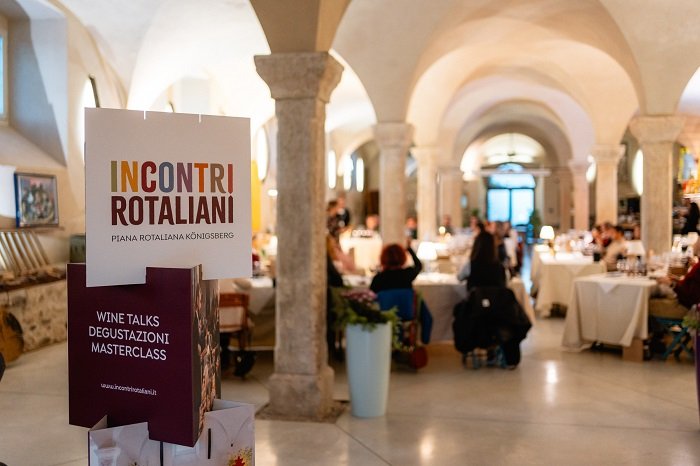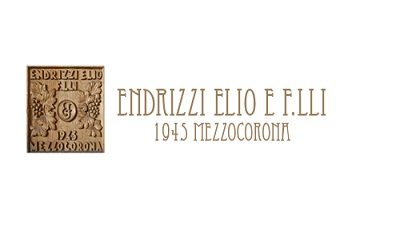In its third edition, Incontri Rotaliani continues under the banner of encounter: Trentino's mountain wines, I Teroldego Rotaliani, meet Sicily's 'A Muntagna wines, Etna Doc.
Yes, I’m talking about the now fearless and acclaimed red wines of Etna that fear no comparison with anyone, the words of winemaker Calogero Statella in one of the speeches of the busy two-day event dedicated to comparison and collaboration. To report everything that has been said is impossible; let us try to go in order and touch on a few highlights.
The Rotalian Encounters
 First, what are they and where are the Rotalian Meetings. Location soon said, we are in Trentino, between the municipalities of Mezzocorona, Mezzolombardo and San Michele all’Adige in the so-called Piana Rotaliana. Every year partners from around the world; first Burgundy, then Rioja and now, for the first time, collaboration with Italian wines. Organized by Consorzio Turistico Piana Rotaliana Königsberg and Azienda per il Turismo Dolomiti Paganella in collaboration with Civiltà del Bere and Associazione Culturale Alteritas Trentino. Incontri Rotaliani was created to enhance the Piana Rotaliana, a “handkerchief of land” that, embraced by mountains and furrowed by the Adige River and the Noce River, constitutes an area of wine-growing excellence. We therefore start here.
First, what are they and where are the Rotalian Meetings. Location soon said, we are in Trentino, between the municipalities of Mezzocorona, Mezzolombardo and San Michele all’Adige in the so-called Piana Rotaliana. Every year partners from around the world; first Burgundy, then Rioja and now, for the first time, collaboration with Italian wines. Organized by Consorzio Turistico Piana Rotaliana Königsberg and Azienda per il Turismo Dolomiti Paganella in collaboration with Civiltà del Bere and Associazione Culturale Alteritas Trentino. Incontri Rotaliani was created to enhance the Piana Rotaliana, a “handkerchief of land” that, embraced by mountains and furrowed by the Adige River and the Noce River, constitutes an area of wine-growing excellence. We therefore start here.
The Rotalian Plain
 Only three municipalities
Only three municipalities
, including, moreover, two with similar names but opposite microclimates. Mezzolombardo cooler that goes into shade earlier and the hours of light are reserved in the morning with the gentle sun from the east. Mezzocorona instead more heat, more hours of daylight, and consequently also a greater tendency to drought, which should be taken into account in the course of managing the greenery and the vineyard as a whole. The third is San Michele all’Adige. Closing the picture is an almost constant ventilation over the area, between cold winds from the mountains and milder winds from the south from Garda.
Handkerchief of land
is the definition chosen to represent this territory of about 1,300 hectares under vine, 450 of which are planted with native red Teroldego grapes.
Embraced by mountains
defines one of its first characteristics, that of being a “plain,” certainly, but of being at such an altitude and latitude that it cannot be considered a plain.
Adige and Walnut
,
and their past floods included, finally contribute to defining its pedoclimatic characteristics having over the years marked the nature of the soils, sandy-silt-clay, as well as their depth and richness.
A queen grape, Teroldego… which is actually declined in the masculine form, is Prince of Trentino. Male or female matters little. What is important is that Teroldego, with evidence since 1921 (I refer to Dalmasso’s publication in Italia Agricola) constitutes a real viticultural heritage for the area whose name is slightly tarnished today.
Why has it lost its former glory?
The market reminds us of this every day with the increasing abandonment of red wine consumption in favor of more casual drinking. Preference falls on white wines, sometimes rosé, and bubbles. Trentino, by the way, is also home to one of Italy’s most famous and rising metodo classico, the Trentodoc, just as it is one of the houses of Pinot Grigio, whether Delle Venezie Doc, Trentino Doc or Igt, which is “only” the most drunk Italian white wine in the world.
Teroldego on the other hand is not simply “a red wine” … but is a real anthocyanin factory! Elixir of life one would say thinking of the natural antioxidant content. Generous vine even in yields, with a production specification that panders to it with 170 q/ha (although we then find large reserves from old vines producing 60 q/ha). Seemingly contrary to what the market wants, from personal experience I say that drinking Teroldego and drinking it in Piana Rotaliana, is good and right and that I recommend.
How to incentivize it then?
First, increasing the numbers in terms of adherence by producers to the DOC. Operation that would make it easier to tell the story of this vine divided into all its versions: from the Rotaliano Doc (think, the first varietal Doc recognized in Trentino in ’71), to the Riserva Doc to end with the Rosato Doc. Considering that 1971 is not that far back it comes to mind that this is a rather modern wine. No doubt Versatile and very agile drinking. Accomplices perhaps are those oh-so-soft tannins, and that innate freshness, sometimes balsamic, that immediately takes us back to a mountain place.
Its sensory organoleptic profiling turns out to be really interesting to be honest, want perhaps because of Professor Mattivi’s intriguing study describing the organoleptic and sensory characteristics also in terms of the collaboration and mutual conditioning of the various components. A topic that would deserve a separate discussion, I only mention it but I believe that this is the (or one of the) ways forward and persevere for the future. Identifying an objective (scientific) and universal language for each wine would make the job easier for everyone. Creating a direct thread from producer to consumer through simple and understandable tools.
As we find ways to get to the point where we all speak the same language, welcome situations of openness and comparison with other areas in the meantime. Source not only of opportunities to take cues from each other but also to To enhance their strengths and mutual uniquenesses.
Some of the following wines are from the masterclass led by editor-in-chief Stefania Vinciguerra, dedicated to the upcoming reserves.







